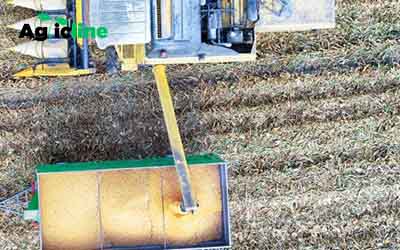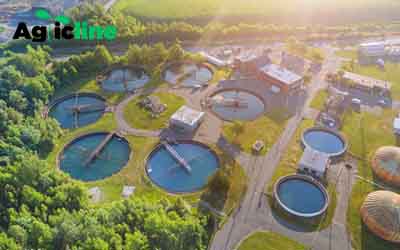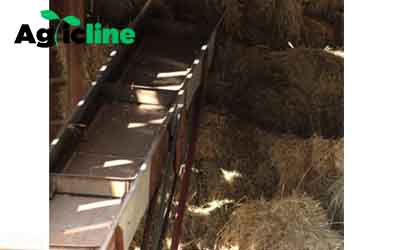A hay preservative applicator is a piece of equipment used to apply hay preservatives to baled hay during the baling process.
It is designed to evenly distribute the preservative onto the hay to prevent spoilage, mold growth, and nutrient loss.
Some hay preservative applicator allow for customization based on hay moisture content, storage conditions, and hay varieties, resulting in improved preservation outcomes, cost efficiency, and adaptability to changing conditions.
Function of Hay Preservative Applicator
The main function of a hay preservative applicator is to apply hay preservatives, such as organic acids or chemical compounds, to the baled hay. The preservative helps inhibit microbial growth, reducing the risk of spoilage and maintaining the quality of the hay during storage.
Preservative Application
The primary function of a hay preservative applicator is to evenly distribute the preservative onto the surface of the baled hay. The preservative is typically a chemical compound or organic acid that helps inhibit the growth of spoilage-causing microbes, such as molds and yeasts.
By applying the preservative, the applicator helps to create a protective barrier on the hay, reducing the risk of spoilage during storage.
Mold Inhibition
Mold growth in baled hay can lead to significant losses in forage quality and nutrient content. Hay preservatives contain additives that inhibit the growth of molds and other spoilage microorganisms.
The applicator ensures that the preservative is evenly and effectively distributed across the hay bales, reducing the potential for mold development and maintaining the quality of the forage.
Improved Hay Quality
By applying hay preservatives, the applicator helps to maintain the nutritional value and palatability of the baled hay.
Preservatives prevent the loss of valuable nutrients, such as proteins, carbohydrates, and vitamins, which can occur due to microbial activity during storage. By preserving the quality of the hay, the applicator contributes to providing nutritious feed for livestock.
Increased Storage Life
Hay preservatives extend the storage life of baled hay by preventing spoilage. When hay is properly preserved, it can be stored for longer periods without significant quality degradation.
The applicator plays a crucial role in ensuring that the preservative is applied consistently and evenly, maximizing the effectiveness of the preservation process and allowing for extended storage times.
Cost Savings
The use of hay preservatives can result in cost savings for farmers. By reducing spoilage and nutrient losses, preserved hay retains its nutritional value, reducing the need for additional feed supplementation.
Moreover, preserving hay decreases waste, as spoiled or moldy bales are minimized. The applicator facilitates the efficient application of the preservative, contributing to cost-effective hay preservation practices.
Compatibility with Baling Equipment
Hay preservative applicators are designed to be compatible with balers, allowing for simultaneous baling and preservative application.
They are often integrated with the baler or attached to the bale chamber, ensuring efficient application during the baling process. The applicator is designed to work seamlessly with the baling equipment, providing convenience and ease of use for farmers.

Hay preservative applicators Method
Hay preservative applicators can apply the preservative in different ways, depending on the design of the equipment. Common methods include:
- Spray Nozzles: Applicators may feature spray nozzles that evenly distribute the preservative solution as a fine mist or spray over the bales. The nozzles can be positioned to cover the hay from different angles to ensure uniform application.
- Roller Application: Some applicators use a roller system to apply the preservative. The roller is coated with the preservative solution, and as the hay bales pass through the applicator, the roller transfers the preservative onto the hay.
- Injection System: Certain applicators have an injection system that injects the preservative directly into the bale during the baling process. This ensures that the preservative is evenly distributed throughout the bale.
Hay preservative applicators Integration with Baler
Hay preservative applicators are often designed to be integrated with balers. They are attached to the baler or mounted on the baler’s frame, allowing for simultaneous baling and preservative application.
The applicator is typically positioned near the bale chamber to ensure efficient and immediate application of the preservative as the bales are formed.
Hay preservative applicators Adjustable Application Rate
Many hay preservative applicators allow for adjustable application rates. This feature enables users to control the amount of preservative applied to the hay, depending on factors such as crop moisture levels, storage conditions, and preservative recommendations.
Here’s how the adjustable application rate works and its benefits:
- Adjustable application rate gives farmers the ability to determine the appropriate amount of preservative to be applied to the hay. Different factors, such as the moisture content of the hay, storage conditions, and preservative recommendations, may influence the desired application rate. By adjusting the rate, farmers can ensure that the correct amount of preservative is applied, optimizing the effectiveness of the preservation process.
- Hay moisture levels and storage conditions can vary, requiring different application rates to achieve optimal preservation. For example, if the hay is relatively dry, a higher application rate may be needed to ensure sufficient preservative coverage. On the other hand, if the hay is already slightly moist, a lower application rate may be sufficient. The adjustable application rate allows for customization based on specific conditions, helping farmers adapt to varying scenarios.
- The ability to adjust the application rate offers cost efficiency by allowing farmers to use the appropriate amount of preservative without excessive waste. Applying too little preservative may not adequately protect the hay, while applying too much can result in unnecessary expense. With adjustable application rate, farmers can optimize the use of preservatives, minimizing costs while still ensuring effective preservation.
- Different types of hay may have varying moisture content and preservation needs. Some hay varieties may require higher or lower application rates depending on their characteristics. The adjustable application rate feature accommodates these variations, allowing farmers to tailor the preservation process to suit different hay types and their specific requirements.
- Hay moisture content can change during the baling process due to weather conditions or variations within the field. The ability to adjust the application rate enables farmers to respond to these changes in real-time. They can modify the rate as needed to ensure consistent and effective preservation, even if the hay moisture levels fluctuate during baling operations.
Safety Considerations of Hay preservative applicators
Appropriate safety precautions should be followed when handling and applying hay preservatives. This includes wearing protective gear, following proper handling procedures, and adhering to any safety guidelines provided by the preservative manufacturer.
By using a hay preservative applicator, farmers can enhance the longevity and quality of baled hay, reduce the risk of spoilage and mold growth, and ensure optimal feed value for livestock. Properly applied hay preservatives can help maintain the nutritional content of the hay and minimize the need for additional feed supplementation.
Hay Preservative Applicator System
In addition to the hay preservative applicator mentioned earlier, some larger operations use integrated hay preservative applicator systems.
These systems include tanks, pumps, and distribution systems that automatically mix and apply preservatives to hay during the baling process.



